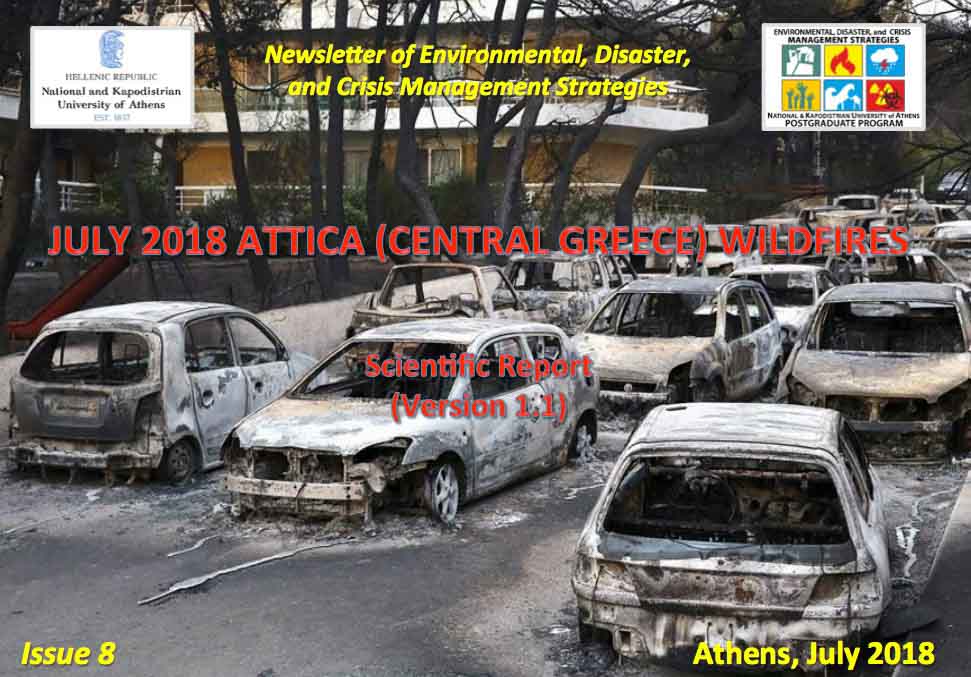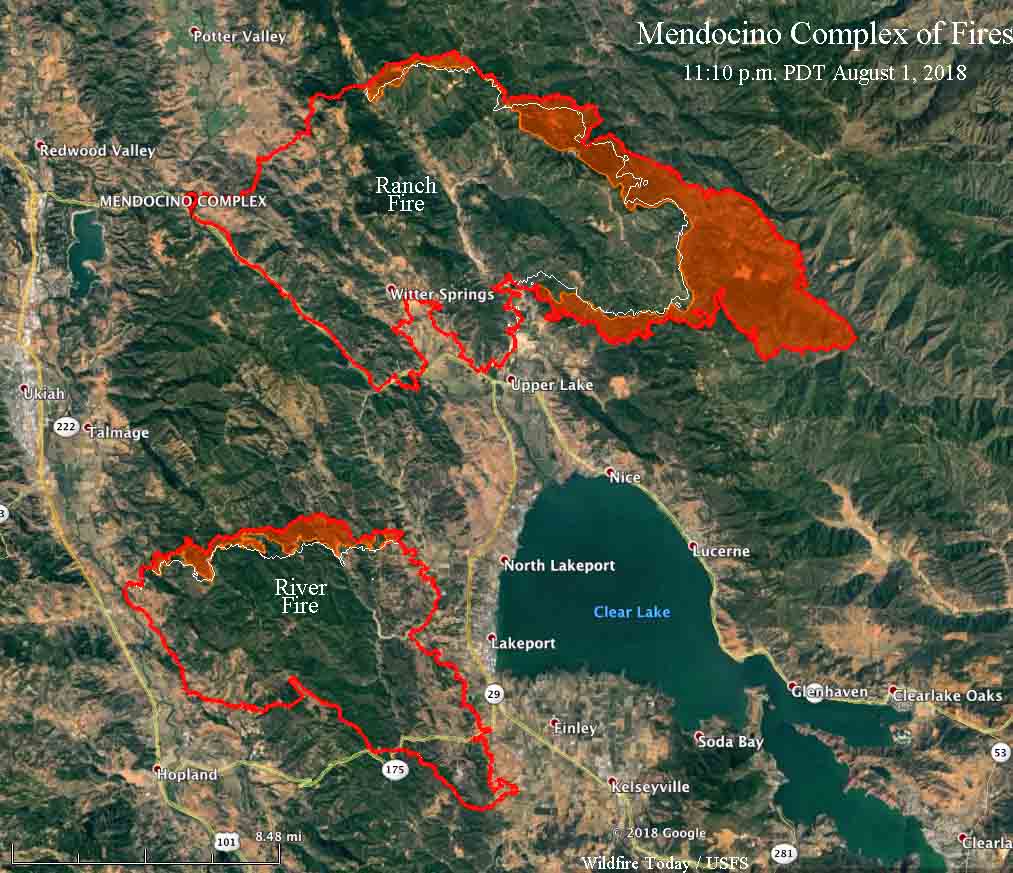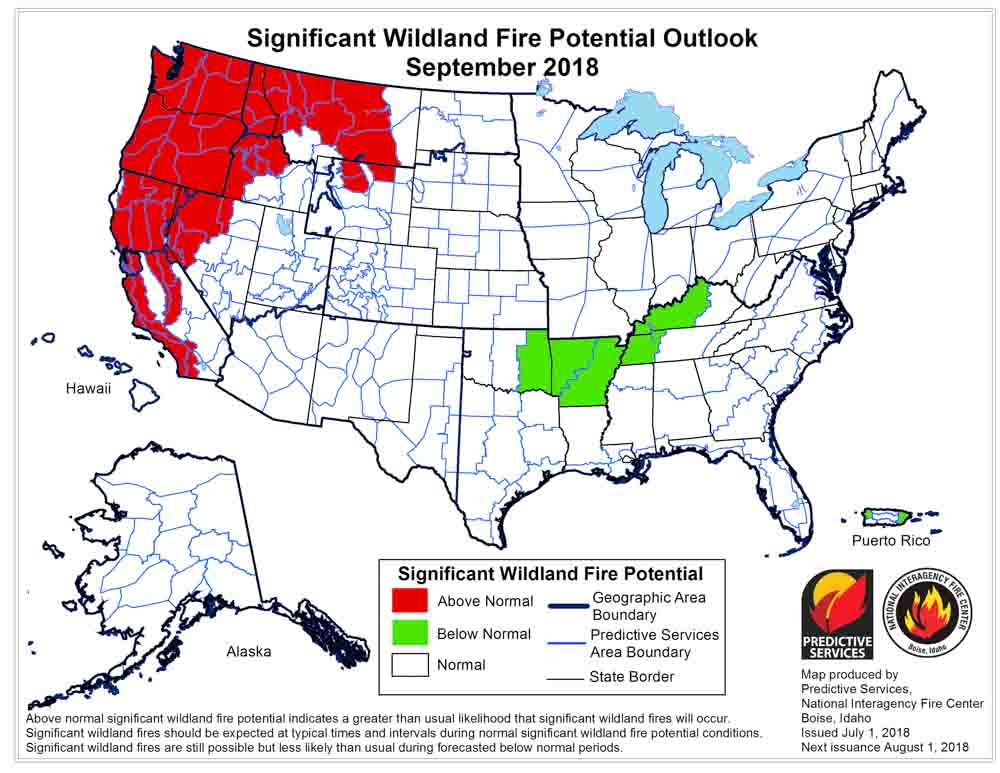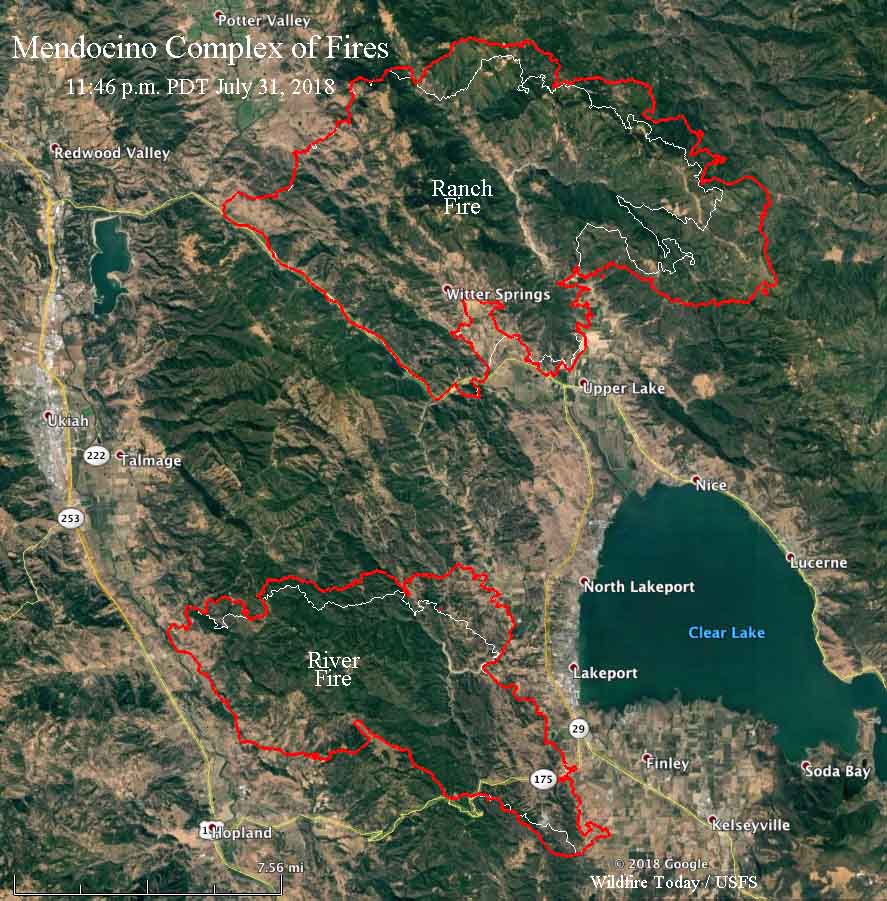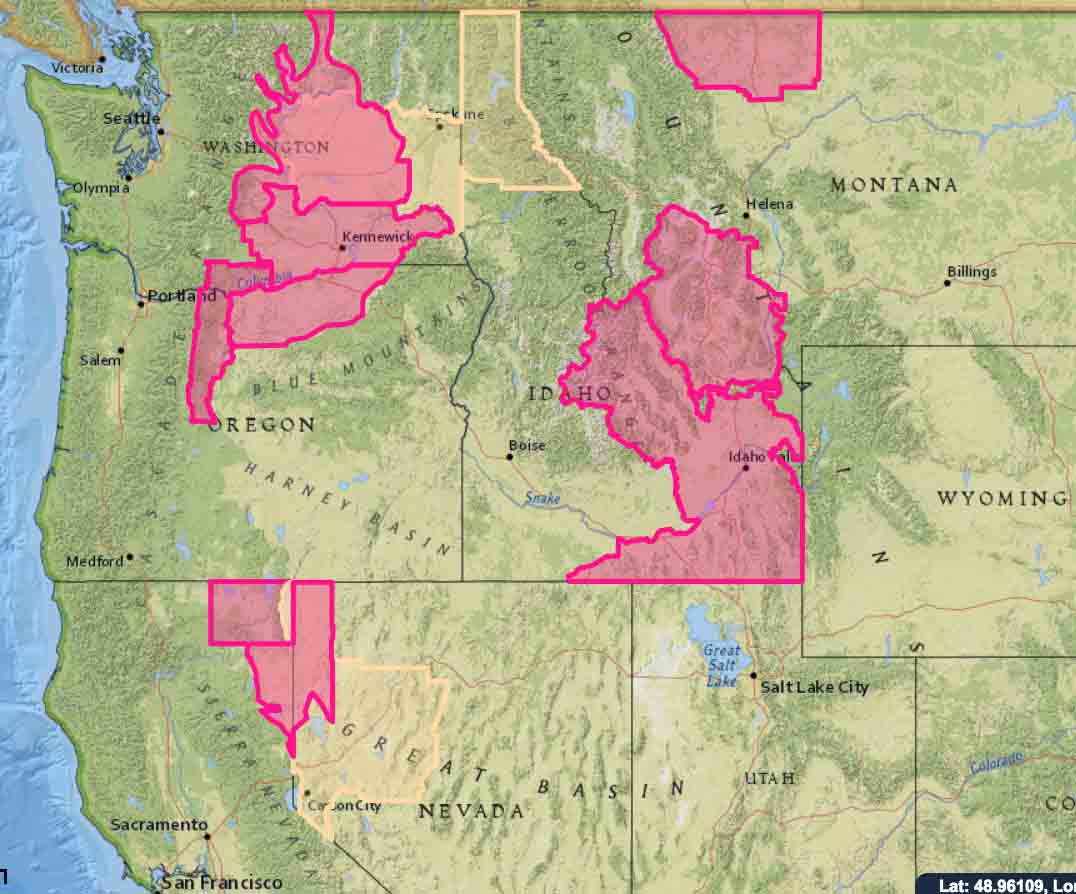A report has been issued about one of the wildfires that recently burned into populated areas in Greece (covered by Wildfire Today here). The National and Kapodistrian University of Athens distributed the document in their Newsletter of Environmental, Disaster, and Crisis Management Strategies.
The fire started July 23, 2018 near the community of Kallitehnoupolis on Penteli Mountain, approximately 20km (12 miles) northeast of Athens and 5.6 km (3.5 miles) west of the Aegean Sea. With the extreme weather conditions it spread quickly east to Kallitechnoulopis, Neos Voutzas, Rafina, and reached Mati where it finally stopped at the coast.
The Fire Service responded, sending 60 personnel in 24 vehicles, 2 ground forces teams, 3 Canadair scooping air tankers, and a helicopter.
Pushed by strong winds out of the west the fire ran 5.6 km (3.5 miles) in about 90 minutes, moving through a densely populated area frequented by tourists.
From the report:
The aftermath is tragic. The fire burned approximately 1,276 ha (3,153 acres), estimated from satellite data. Within the area, there are approximately 1,220 totally destroyed buildings (according to official inspections) and 305 burned vehicles. The days following the event, the authorities recovered at least 91 bodies from the scene (updated July 31, 2018 at 11.00am). Several missing persons were reported and tens of injured (approximately 200 at some point) were transferred to nearby hospitals.
The wind speeds recorded by a network of weather stations were the highest seen during the summer months in the last eight years, with gusts of 100 to 120 km/hour (62 to 74 mph).
The rapid spread of the fire and with little effective notification, the residents and tourists in the communities in its path and the densely populated city of Mati had little chance to escape. The report said, “The population had almost zero time between risk awareness and reaction decision”.
 Many got in their vehicles and drove away from the blaze toward the coast. They encountered urban planning, or the lack of it, that included narrow streets, numerous dead ends, elongated blocks without the possibility of lateral escape, and the absence of areas that could serve as safety zones. The visiting tourists who were often not very familiar with the layout of the streets were at a particular disadvantage. The low visibility due to the smoke was another challenge. Continue reading “Report issued on one of the devastating fires near Athens, Greece”
Many got in their vehicles and drove away from the blaze toward the coast. They encountered urban planning, or the lack of it, that included narrow streets, numerous dead ends, elongated blocks without the possibility of lateral escape, and the absence of areas that could serve as safety zones. The visiting tourists who were often not very familiar with the layout of the streets were at a particular disadvantage. The low visibility due to the smoke was another challenge. Continue reading “Report issued on one of the devastating fires near Athens, Greece”

